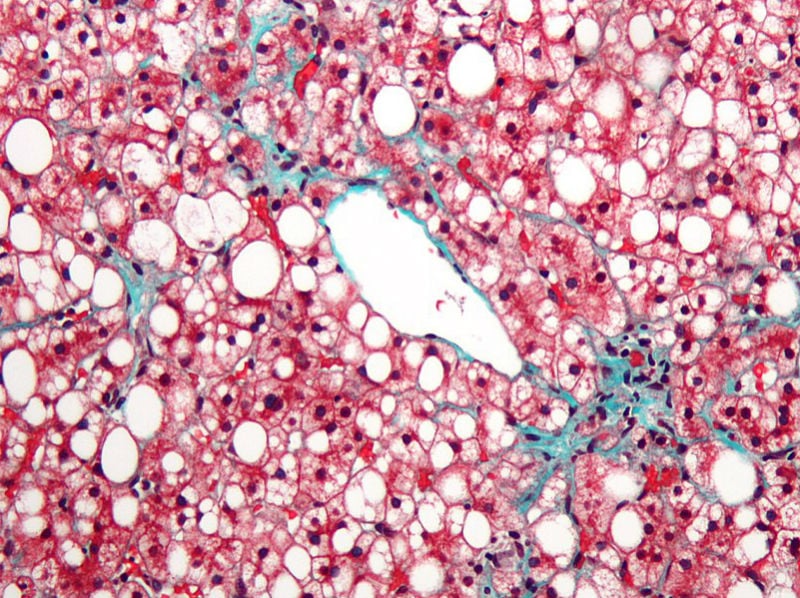Sagimet's NASH drug-GLP-1 combo outperforms either alone for fibrosis
30 Nov 2023
Phase 2Clinical Result

Preview
Source: FierceBiotech
A combination of a surrogate for Sagimet's NASH drug denifanstat with semaglutide outperformed either drug alone for treating fibrosis.
Just as things were getting overheated in the nonalcoholic steatohepatitis (NASH) drug space, GLP-1 receptor agonistsGLP-1 receptor agonists showed up to the party with the potential to treat some symptoms of the chronic liver disease. Now, preclinical data from Sagimet Biosciences hints that when it comes to treating NASH, blockbuster GLP-1 drugs like Novo Nordisk’s semaglutide may be more of an ally than a threat to pharma companies pursuing the indication.
In a poster and oral presentation given Nov. 28 at the Obesity and NASH Drug Development Summit in Boston, Sagimet shared results from a study on mouse models of NASH that suggested pairing a novel fatty acid synthase (FASN) inhibitor similar to its drug denifanstat with semaglutide—marketed by Novo Nordisk as Wegovy for weight loss and Ozempic for type 2 diabetes—was more effective than either agent alone at improving some symptoms of the condition.
Notably, the data also showed that most of the heavy lifting for treating liver fibrosis, the scarring that leads to more serious complications like liver failure, was done by the FASN inhibitorFASN inhibitor. This suggests that semaglutide alone is not enough to treat NASH, as a 2022 readout of Novo Nordisk’s phase 2 study on the drug for the indication suggested.
“We are pleased to report strong preclinical results demonstrating that the FASN inhibitorFASN inhibitor alone, not semaglutide, was responsible for a significant reduction of liver fibrosis, a predictor of outcome in NASH,” Eduardo Bruno Martins, M.D., Chief Medical Officer at Sagimet, said in a press release.
In the study presented at the summit, the researchers gave daily oral doses of semaglutide, the FASN inhibitorFASN inhibitor, or both together for 12 weeks to obese mice with confirmed liver fibrosis and other signs of NASH. At the end of the period, they used artificial intelligence to assess changes in fibrosis levels.
The animals on semaglutide alone lost more weight and ended the study with lower levels of liver triglycerides and plasma alanine aminotransferase—a biomarker for liver injury, though not necessarily NASH—compared to those who received the FASN inhibitorFASN inhibitor alone. For reducing liver cholesterol levels, the FASN inhibitorFASN inhibitor outperformed semaglutide by itself. However, the combination had a greater impact on the biomarkers than either drug as a monotherapy (with the exception of liver cholesterol levels, which were roughly the same for FASN alone and the combo).
For markers of fibrosis, the combination was again the clear winner. By most metrics, fibrosis improved more dramatically with the FASN treatment alone than with semaglutide, indicating that Sagimet’s drug was largely responsible for the improvements.
The findings warrant “further clinical evaluation” of a denifanstat-GLP-1 combination therapy, Martins said in the release. Meanwhile, Sagimet continues to evaluate denifanstat as a monotherapy in NASH patients with moderate fibrosis in phase 2b of its FASCINATE-2 study, with results expected in the first quarter of 2024.
For more details,please visit the original website
The content of the article does not represent any opinions of Synapse and its affiliated companies. If there is any copyright infringement or error, please contact us, and we will deal with it within 24 hours.
Organizations
Indications
Hot reports
Get started for free today!
Accelerate Strategic R&D decision making with Synapse, PatSnap’s AI-powered Connected Innovation Intelligence Platform Built for Life Sciences Professionals.
Start your data trial now!
Synapse data is also accessible to external entities via APIs or data packages. Leverages most recent intelligence information, enabling fullest potential.




